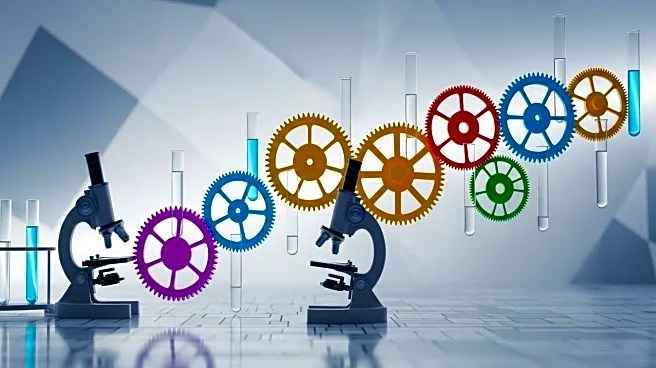What is the story about?
What's Happening?
Lego has released a new set titled 'The Evolution of STEM,' which celebrates significant moments in science, technology, engineering, and mathematics. This set, part of the Lego Ideas series, is based on a fan design and includes 879 pieces. It features iconic scientific elements such as the NASA Voyager Probe, a carbon atom, and a double helix. The set also includes minifigures of historical figures like Marie Curie, Sir Isaac Newton, and George Washington Carver. Priced at $79.99, the set is designed to be both educational and visually appealing, offering a detailed and colorful representation of STEM history.
Why It's Important?
The release of 'The Evolution of STEM' set by Lego highlights the growing interest in educational toys that promote STEM learning. This set not only serves as a fun and engaging activity but also as a tool to inspire curiosity and learning in children and adults alike. By incorporating historical figures and scientific concepts, Lego is fostering an appreciation for the contributions of scientists and the importance of STEM fields. This aligns with broader educational trends emphasizing STEM education as crucial for future innovation and economic growth.
What's Next?
As Lego continues to expand its range of educational sets, it is likely to inspire other toy manufacturers to develop similar products that combine play with learning. The success of this set could lead to more collaborations with educational institutions and scientists to create sets that delve deeper into specific scientific fields. Additionally, Lego may explore partnerships with schools to integrate these sets into classroom learning, further promoting STEM education.
Beyond the Headlines
The 'Evolution of STEM' set also raises questions about the representation of diversity in STEM fields. While the set includes notable figures like Marie Curie, there is potential for future sets to highlight a broader range of contributors from diverse backgrounds. This could help address the underrepresentation of certain groups in STEM and inspire a more inclusive future generation of scientists and engineers.
AI Generated Content
Do you find this article useful?
















